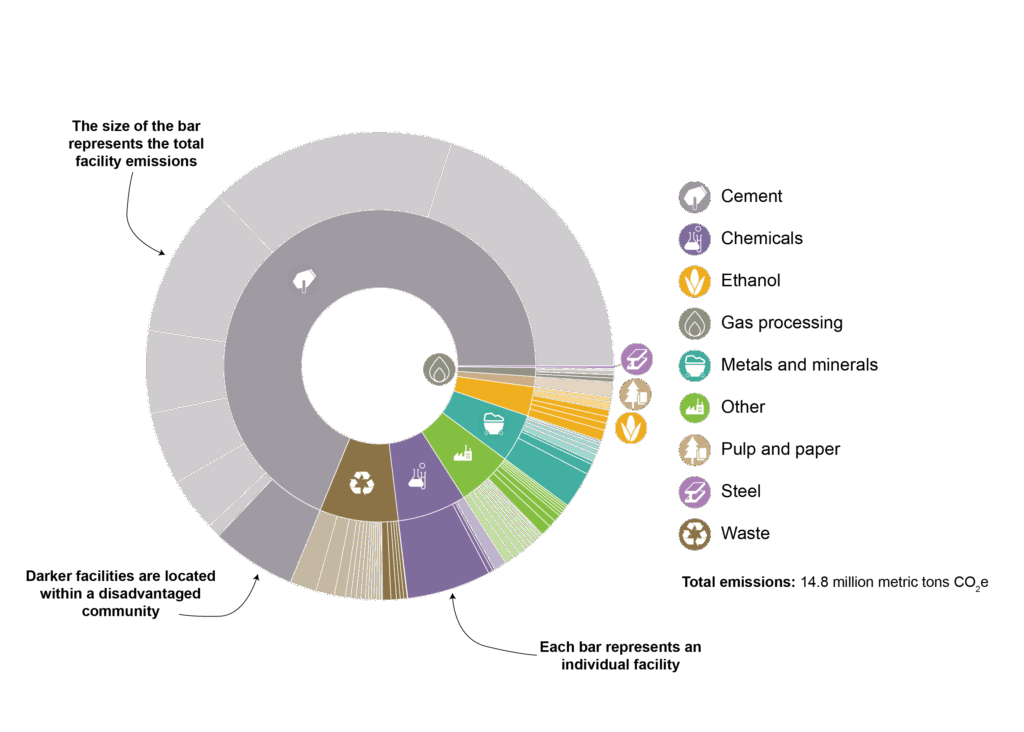Missouri
Missouri ranks 15th in the nation in industrial emissions. The highest emitting sectors include minerals, chemicals, and waste. Cement and lime production, most of which takes place in southeastern Missouri, accounts for two-thirds of the state’s industrial emissions. Although industry is primarily concentrated in the St. Louis and Kansas City areas, central and southwestern Missouri are also important centers of industrial production.

- The top 20 emitters are shown on this map, coded by industrial sector. The size of the circles corresponds to emissions: the larger the circle, the higher the emissions.
- Disadvantaged communities (as determined by the federal government) are shaded blue.

- The inner circle provides a visual representation of the share of emissions generated by each industrial sector.
- The outer circle also indicates the share of a sector’s emissions generated in disadvantaged communities.
STATE ENERGY POLICY:
Considering a state’s broader energy policy landscape is helpful when developing policies to support industrial innovation. Missouri has not established greenhouse gas emissions targets or a clean heat standard. Missouri was the third state to adopt a renewable portfolio standard by ballot initiative in 2008, but it has expired. While these formal commitments are not prerequisites for innovative industrial policy, they can provide a supportive framework. In addition, the development of effective state energy policy requires several key components: streamlining permitting and establishing an efficient, transparent appeals process that engages local communities early while giving clarity and assurances to project developers. Discussions around innovative industrial policy present an opportunity for broader conversations about state energy policy to ensure a mutually reinforcing strategy.
STATE LEGISLATIVE context & opportunity:
Let us know if you are aware of additional legislation advancing industrial innovation in Missouri that should be featured. The context below is not exhaustive and serves as an example of recent policies and programs, and where there may be future opportunities:
- Missouri Department of Natural Resources has convened governmental , industry, and community stakeholders over the past few decades to develop State Energy Plans. In response to 2025 Executive Orders, Unleashing American Energy (Executive Order 14154) and Declaring a National Energy Emergency (Executive Order 14156), the department’s website indicates that it will develop potential solutions to meet Missouri’s specific energy needs.
- Midwest Industrial Assessment Center at the University of Missouri provides no-cost comprehensive assessments for industrial facilities to identify energy-saving and efficiency opportunities.
- Carbon capture technologies are another opportunity to reduce industrial emissions in the state. Learn more about the economically feasible subsectors in Missouri and facilities that qualify for the federal 45Q tax credit.
Explore more state legislation related to industrial innovation by clicking on a specific year: 2025 legislation, 2024 legislation, 2023 legislation.
